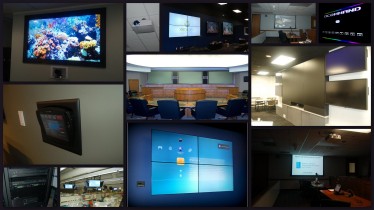Wireless Home Theater Speaker Requirements
In a traditional wired speaker setup, both the soundtrack impulses and the power needed to make the loudspeaker work are passed through speaker wire connections from an amplifier.
However, in a wireless speaker setup, a transmitter is typically required to transmit the needed audio signals, and a receiver needs to be used to receive the wirelessly transmitted audio signals.
In this type of setup, the transmitter will need to be physically connected to preamp outputs on a receiver, or, in the case where you have a packaged home theater system that incorporates a built-in or plug-in wireless transmitter. This transmitter then sends the music/movie soundtrack information to a speaker or secondary amplifier that has a built-in wireless receiver.
However, another connection is needed to complete the process—power. Since power cannot be transmitted wirelessly, in order to produce the audio signal that is wirelessly transmitted so you can actually hear it, the speaker needs additional power in order to work.
What this means that the speaker still has to be physically attached to a power source and an amplifier. The amplifier may be built right into the speaker housing or, in some cases, the speakers are physically attached with speaker wire to an external amplifier that is powered by batteries or plugged into the house AC power source. Obviously, the battery option severely limits the ability of a wireless speaker to output adequate power over a long period of time.
When Wireless Is Not Really Wireless
One way that so-called wireless speakers are applied in some Home-Theater-in-a-Box Systems that tout wireless surround speakers is they simply have a separate amplifier module for the surround speakers.
In other words, the main receiver unit has a built-in amplifier that physically connects to the left, center, and right front speakers, but has a transmitter that sends the surround sound signals to another amplifier module that is placed in the back of the room. The surround speakers are then connected by wire to the second amplifier module in the back of the room. In other words, you have not eliminated any wires, you have just relocated where they go. Of course, the second amplifier still needs to be connected to an AC power outlet, so you have actually added that.
So, in a wireless speaker setup, you may have eliminated the long wires that typically go from the signal source, such as a stereo or home theater receiver, but you still need to connect the so-called wireless speaker to its own power source, and, in most cases, a secondary amplifier module, in order for it to actually produce sound.
This can also limit speaker placement as the distance from an available AC power outlet then becomes a major concern. You may still need a rather long AC power cord if a convenient AC outlet is not nearby.





 The mode of communication has really changed over the past few decades. What was back then communicated through radio or written word can now be communicated across the world through
The mode of communication has really changed over the past few decades. What was back then communicated through radio or written word can now be communicated across the world through 



